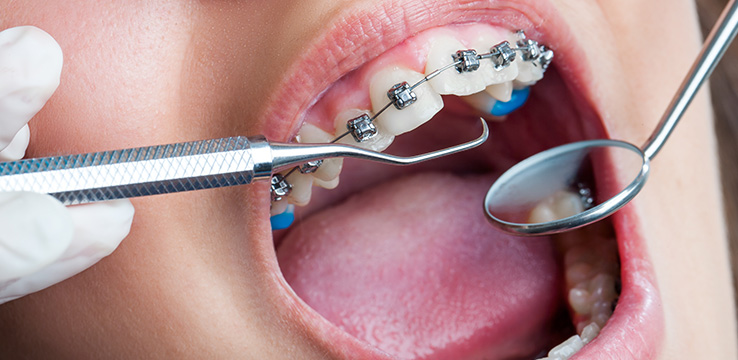
As the saying goes: prevention is better than a cure. It's a saying that applies to orthodontics, too. Orthodontists are trained to identify subtle problems with jaw growth and emerging teeth in children and adolescents, even while some baby teeth are still present.
While many people will think of orthodontics as a practice fuelled by vanity, it is actually also known to improve bad bites, otherwise known as malocclusions. These occur due to the misalignment of teeth or jaws, which results in an irregular bite, cross bite or overbite. Malocclusions tend to be seen as crooked, crowded or protruding teeth, which may affect your smile, appearance, speech and your ability to chew.
There is an advantage of seeking early treatment, as an orthodontist that finds problems early on in your child's life will be able to correct them more easily than if they are left until later on in life.
What age should my child see an orthodontist?
By about the age of 7, most children will have a mix of baby and adult teeth. By visiting the dentist at Shore Dental, potential orthodontic problems such as the crowding of teeth, protruding teeth or spaces between teeth will be discovered early and the best timeframe for effective treatment will be determined early.
At Shore Dental, we strongly recommend that all children have their first orthodontic screening by the age of 7, as this is when the first adult molars erupt, establishing the back bite. During this crucial stage, an orthodontist can evaluate front-to-back and side-to-side tooth relationships.
However, if you see any of the signs listed earlier, that is probably sign to set up an appointment with your orthodontist, too.
What signs should I look out for?
It is difficult for the untrained eye to tell whether a child has an orthodontic problem, however, there are some signs or habits that may indicate the need for an orthodontic examination. These include:
 Early or late loss of baby teeth
Early or late loss of baby teeth Difficulty in chewing or biting
Difficulty in chewing or biting Mouth breathing
Mouth breathing Thumb sucking
Thumb sucking Crooked teeth
Crooked teethWhat are the benefits of early orthodontic treatment?
For young patients who have shown a true need for early orthodontic treatment, it gives the orthodontist a chance to:
 Guide jaw growth, creating facial symmetry
Guide jaw growth, creating facial symmetry Help lower the risk of trauma to protruded front teeth
Help lower the risk of trauma to protruded front teeth Correct bad oral habits
Correct bad oral habits Create room which helps guide adult teeth into a more favourable position as it grows
Create room which helps guide adult teeth into a more favourable position as it grows Take measures to prevent serious problems developing in the future
Take measures to prevent serious problems developing in the future Reduce treatment time with braces
Reduce treatment time with braces Reduce the need for tooth removal
Reduce the need for tooth removal


